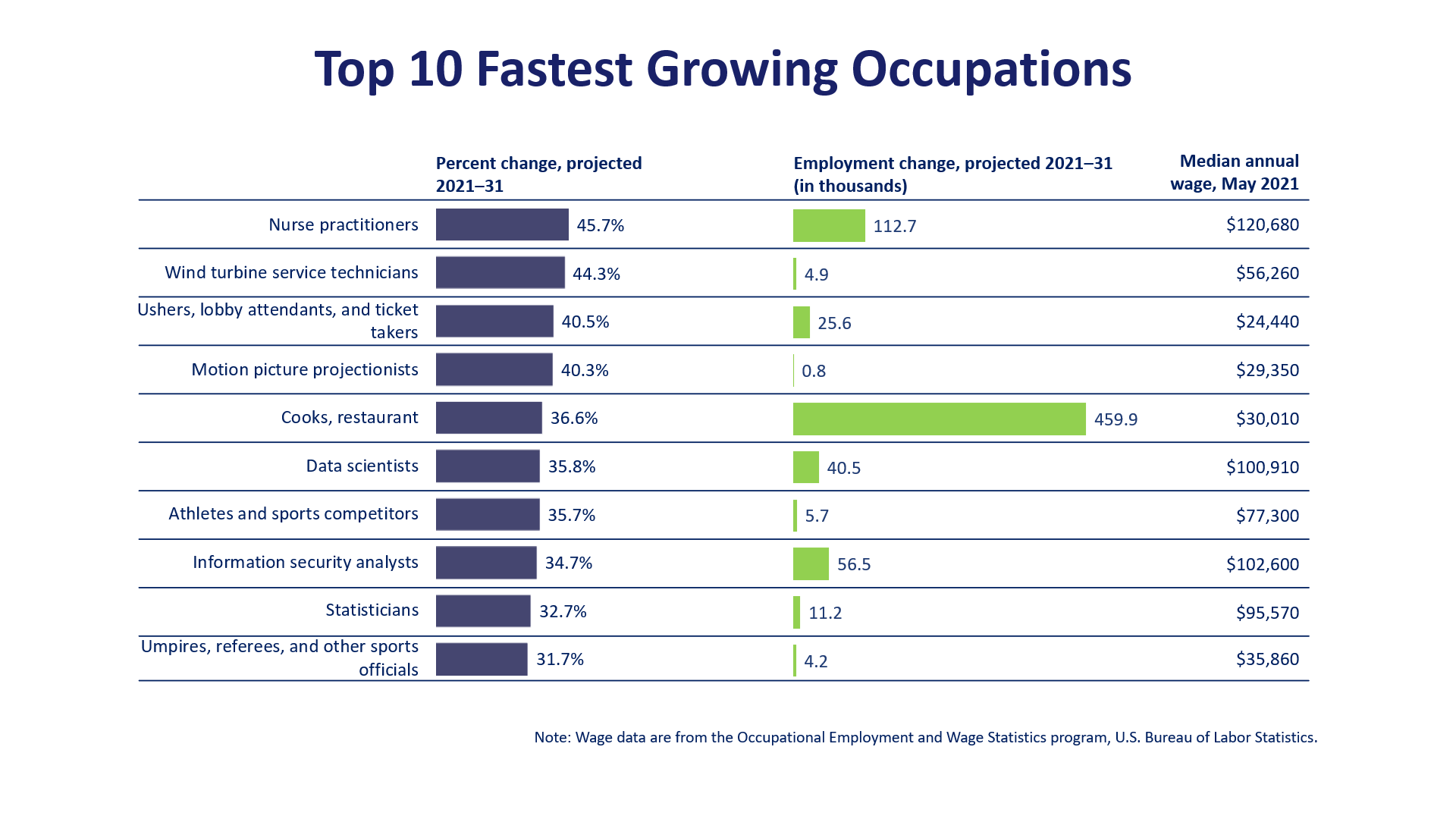Tips to Enhance STEM Learning in Classrooms and Prepare Students for the Future
NMSI |
September 9, 2022
It's abundantly clear that career opportunities for today's students will rely heavily on STEM skills based on the chart published by the U.S. Bureau of Labor Statistics. However, STEM skills are not limited to STEM-related professions. Students can apply these skills in almost any career path. So, how do schools lay the foundations and set their students up for success?
Here are five suggestions to enrich STEM learning in classrooms, from simple conversation starters to professional development opportunities.

Source: U.S. Bureau of Labor Statistics
Look for any unintentional biases (including self-biases) that may affect how STEM topics are discussed in classrooms
-
Sometimes students (and their parents) don't perceive themselves as potential STEM stars, but in reality, anyone can be a STEM star. Read how a student from Pittsburgh Public Schools grew to love physics because of the culture of confidence the district built.
-
Take a note from Dr. Shirley Malcom's inspiring TED talk about overcoming assumptions, such as believing someone doesn't possess the "math gene" or "look like" a scientist.
Build in STEM topics when chatting about day-to-day things
-
"It was sure hot out during recess, wasn't it? Did you know that sweating is how our bodies help us cool down after being in the sun?" A conversation like this is the perfect opportunity to explain how sweating benefits our bodies and why staying hydrated is important.
-
Older students typically like to talk about cars and driving, which is a great time to discuss the pros and cons of gas, electric, and hybrid vehicles in terms of purchase and operating costs (math), the impact cars and trucks have on the environment (science), or the engineering that goes into the various types of vehicles.
Gain inspiration and ideas from other districts
-
Identify scoring trends across the district and deploy vertical teaming strategies to address areas of weakness. Hayward Unified School District discovered learning gaps in math between fifth and sixth grades, and students were failing math courses heading into ninth grade. That all changed after partnering with NMSI. See how HUSD leveraged NMSI's Laying The Foundation and generated high levels of math confidence in their students.
-
Create a can-do culture with equitable STEM opportunities throughout the district. Clayton County Public Schools cultivated a success mindset for students and teachers; they also introduced advanced learning opportunities starting in middle school. Although structural adjustment is essential, the most powerful aspect of these elevated expectations is that students developed a perspective that taking accelerated classes is the standard path forward. Read how these changes were a springboard to success for students at CCPS.
Design opportunities for learning without intimidation
-
A 16-year-old student started a Women in STEM club to offer hands-on activities and build camaraderie with other female students interested in STEM. This type of initiative fosters curiosity and experimentation in an emotionally safe environment.
-
A 5th grade teacher uses Legos and robotics to teach students critical thinking and problem solving skills, inspiring her classroom students to explore STEM skills. This gives them the confidence early on to pursue their passions.
Provide teachers with the tools, training, and support needed to improve student outcomes
-
Offer access to evidence-based STEM professional development, which gives teachers the in-depth content and pedagogical knowledge that lead to increased STEM achievement.
-
Utilize ESSER (Elementary and Secondary School Emergency Relief Fund) dollars before they expire. This money is designed to help mitigate pandemic learning loss and can contribute to professional development expenses.
Whether you are a third-grade teacher, a high school instructor, or a principal, there are moments throughout each day when you can weave in STEM lessons that spark students' enthusiasm. We hope these tips are helpful to help build the foundational STEM skills students need.